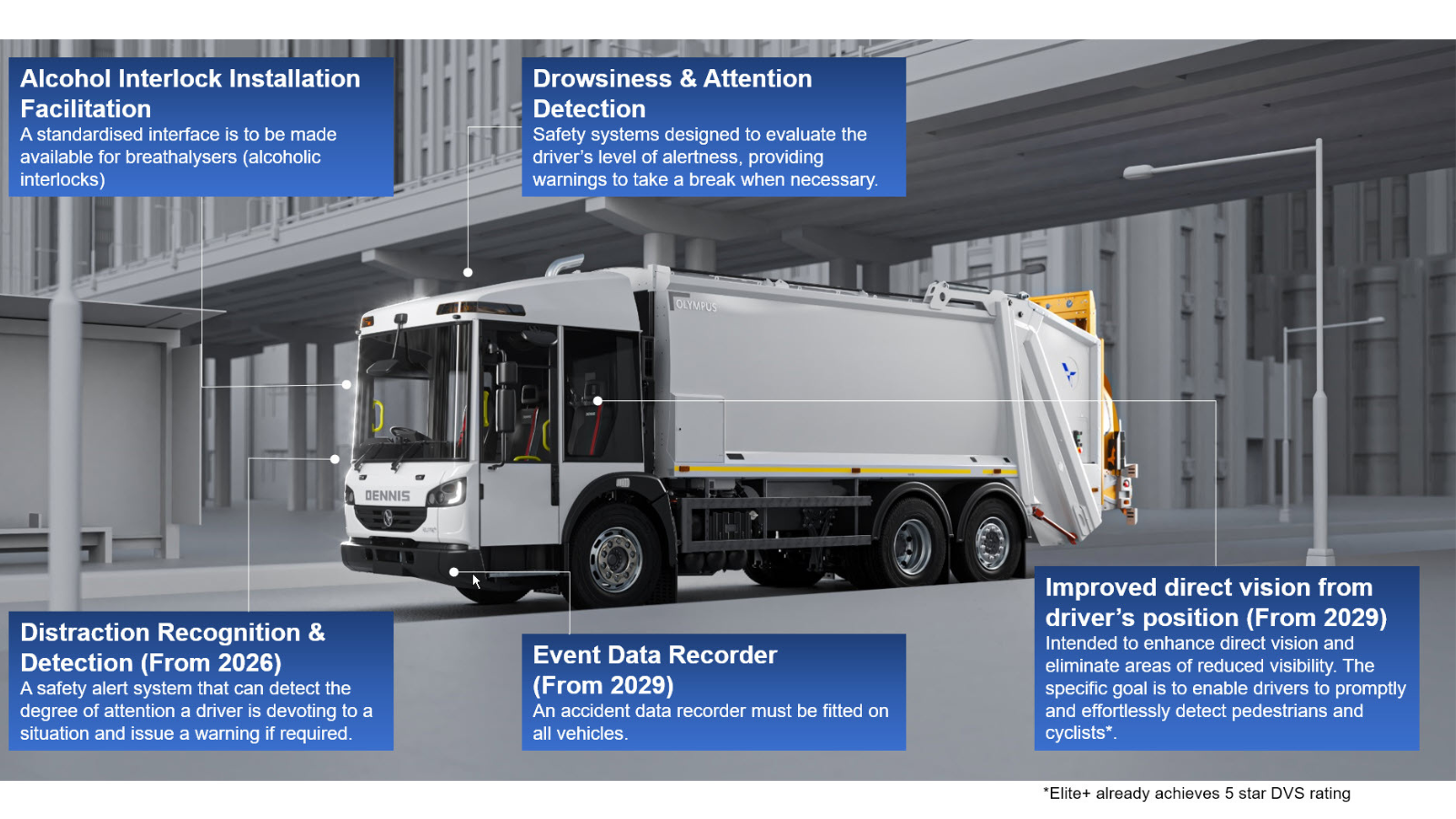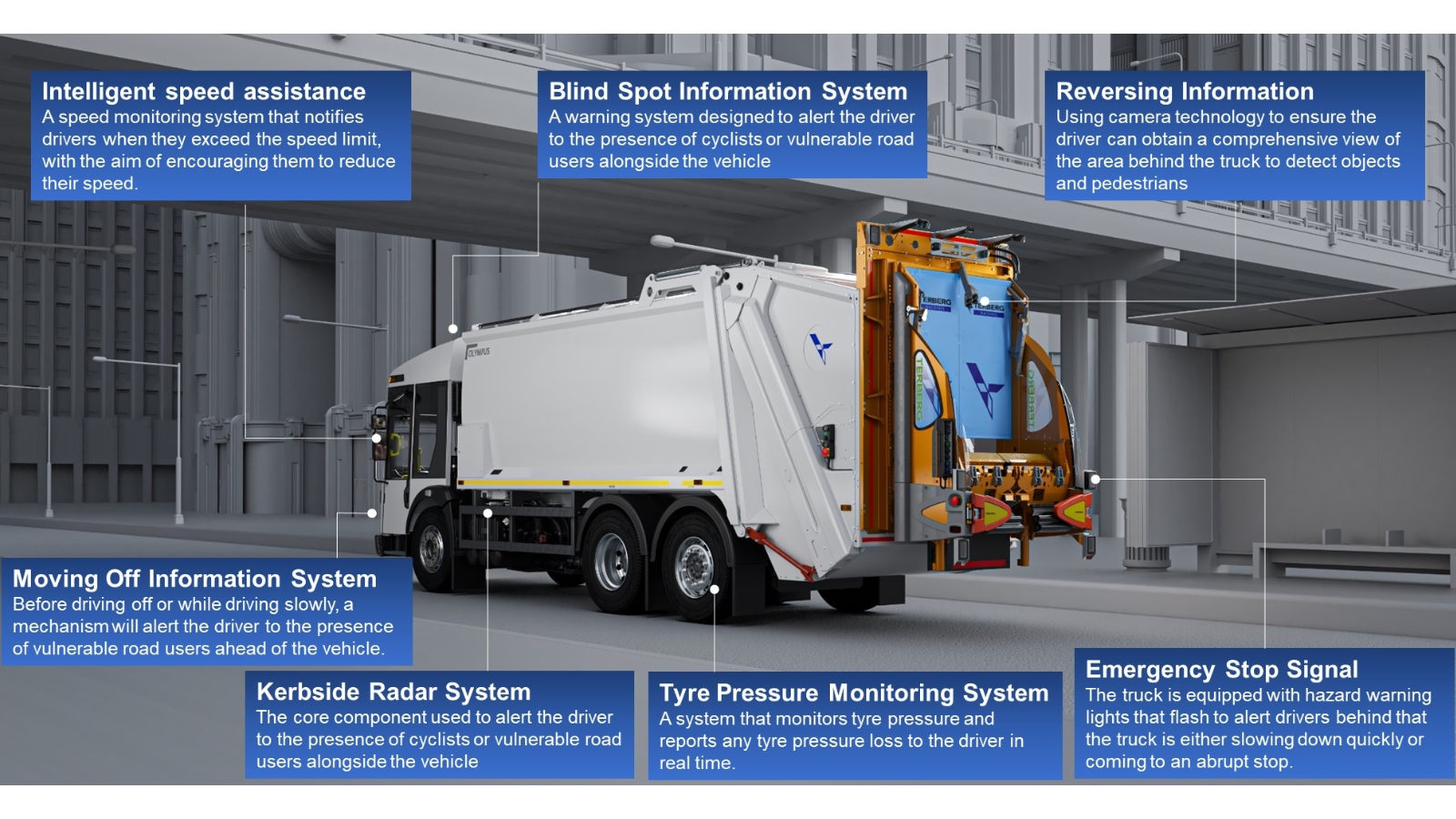Protecting vulnerable road users

Andy Graves, CRM, Data & Insights Manager
The safety of vulnerable road users should be a high priority for anyone working with refuse collection vehicles (RCVs). A 26-tonne truck can do a lot of damage if the right safety systems are not in place. And if drivers are not fully alert at all times, particularly when negotiating narrow streets on an early morning round, the consequences can be deadly.
To help reduce the number of fatal and serious injuries caused by traffic accidents, the European Union (EU) introduced in July 2022 a series of regulations governing vehicle safety. Under GSR, active safety features were made mandatory on European vehicles, with more safety features set to become mandatory from July 2024 onwards. Essentially, the aim is to reduce human error while protecting drivers, pedestrians, and cyclists. GSR will, according to the EU’s estimation, save more than 25,000 lives and avoid a minimum of 140,000 serious injuries by 2038.
‘Effectively, it was aimed originally at autonomous vehicles and self-driving vehicles, but it has been expanded to include trucks,’ says Andy. ‘The idea is to introduce advanced driver assistant systems to try and minimize the risk of accidents and injuries with vulnerable road users.’
In a presentation at the Fleet Managers Forum during RWM 2023, Andy situated the regulations within a wider context. The GSR is one component of an EU road-safety strategy, he told the audience, that includes improved risk mapping and modernised rules on road infrastructure, with a particular focus placed on the protection of vulnerable road users in urban areas.
The EU is working to reach ‘Vision Zero’. Set out in the EU Road Safety Policy Framework, this is the goal of achieving zero fatalities and serious injuries on roads in Europe by 2050. This aligns with the safety recommendations of the Global Plan for the United Nations Decade of Action for Road Safety 2021-2030, endorsed by the UK Government.
The new regulations require 11 active safety systems which will be applied in stages. By July 2024, eight mandatory safety features will be required for new trucks. Then, by 2026, advanced distraction recognition and prevention will be mandatory. By 2029, the direct vision requirements—something Dennis Eagle is a leader in the field on—and event data recorder regulation will apply.
Andy walked LAPV through what Dennis Eagle has to offer in terms of safety systems and ensuring their RCVs are compliant with the regulations. He begins with the new long-range, forward-looking camera for lane departure warning.
‘We already had one that was introduced at Euro VI, but this one includes Pedestrian Assistant Emergency Braking System (PAEBS),’ he says. ‘The idea is it doesn’t just alert the driver to the big heavy lumps of metal in front of you. It also considers people and other items.’
The PAEBS is linked to the Moving Off Information System, a short-range system designed to alert the driver to the presence of vulnerable road users while the RCV is moving off or driving slowly. These safety measures are complemented by a Blind Spot Information System, which deploys sensors to alert the driver to cyclists and other road users, and camera technology designed to provide the driver with a comprehensive view of the area behind the truck. Dennis Eagle is also offering a new Kerbside Radar System which alerts the driver to the presence of anyone in the truck’s vicinity.

‘Of course, we have had optional equipment from third-party companies over the past few years, but these [new features] are all linked in with the braking system as well,’ Andy explains. ‘They don’t just give a warning in the cab. They’re all linked to the engine management, the braking, the suspension.’

Safety is not just a question of being able to detect other road users, however. Driver behaviour is important too. Dennis Eagle offers a safety system that can prevent a driver who has consumed alcohol from starting the truck and an Intelligent Speed Assistance feature that raises the alarm if the RCV exceeds the speed limit.
Another driver-focused feature is the Drowsiness & Attention Detection system. This is designed to evaluate the drivers’ level of alertness, providing warnings to take a break when necessary. According to Andy, this latter feature is ‘effectively a camera system that includes infrared that is looking to see that the driver is alert, his eyes are open, and that he’s looking in the right direction.’
The safety of vulnerable road users is paramount when it comes to fleet management. It is essential that local authority fleet managers are well-versed in what systems are available to make their RCVs the safest they can possibly be.